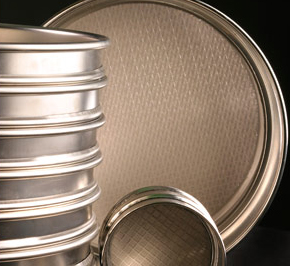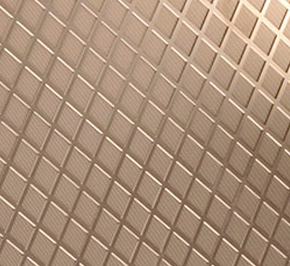Precision Eforming produces a full line of electroformed sieves to meet any process, environmental or design requirement for absolute filtration applications with an impressively vast range from 2 to 2,000 microns in any single micron increment.
Precision Eforming manufactures reliable electroformed sieves with consistently tight tolerances and exceptional accurate edge acuity that determine particle size for our client’s most precision sensitive areas of the powder industry. The precision and durability of our electroformed nickel sieves allow them to be used in not only production control but in production environments themselves. More so, manufacturing flexibility and design capabilities enable Precision Eforming to exceed customized product requirements.
We Welcome Your Inquiries
Please feel free to contact us today for more information.
Product Description
Product Features
- Tolerance ± 2 micrometers
- Openings from 2µm to 2000µm by any increment of 1µm
- Square, round or slotted apertures
- Mounted to 3’’, 8’’, 12’’, 75mm, 100mm and 200mm stainless steel frame or 3’’ acrylic frame
- Also available as unmounted mesh 3×3’’, 8×8’’ or 12’’x12”
- Flat, non-woven for easier cleaning and less clogging
- Interchangeable with traditional woven Test Sieves and equipment
- Histogram and certification supplied with every serialized sieve
Recommended Cleaning Instructions for Electroformed Sieves
The correct handling, cleaning, drying and storing of the test sieves ensures their long service life and accuracy.
Particles can be removed from metal framed precision electroformed sieves using an ultrasonic bath of mild detergent and distilled water. The sieve should be placed in the vertical position. 150 watts maximum ultrasonic energy should be used for NO MORE THAN 15 SECONDS at a time to prevent cavitation damage to the sieve sheet. Remove the sieve, flush with deionized or distilled water, and air dry. Do NOT use a brush or pressurized air to clean the sieve sheet.
If the sieve sheet is broken, it can be repaired by applying epoxy cement with the point of a fine needle or applying small spheres of metal solder with a pencil-point iron. In both procedures a low power (10 to 50×) binocular microscope should be used.
Ultrasonic Cleaner of 150 Watts or Less:
- Fill cleaner with mild detergent and heated water at a temperature of 70°- 90° F.
- Place sieve in upright position for NO MORE THAN 15 SECONDS.
- Remove the sieve, rinse with deionized or distilled water, and allow to air-dry.
- DO NOT use a brush or pressurized air to clean the sieve sheet.
To Remove Stains:
- Place sieve in a bath of mild detergent and heated water at a temperature of 115°–120°F.
- Soak sieve in solution for at least 60 minutes.
- Remove the sieve, rinse with distilled water, and allow to air-dry.
- DO NOT use a brush or pressurized air to clean the sieve sheet.
- For spot cleaning, isopropyl alcohol is acceptable.


